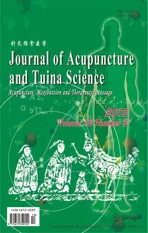Study on metabolic intensity value changes of points on the face using thermal chromatography technology
2015-05-18YuLe余乐ZhouZhongyu周仲瑜WeiDan韦丹HuangWei黄伟LiuYiran刘一然TanSanchun谭三春
Yu Le (余乐), Zhou Zhong-yu (周仲瑜), Wei Dan (韦丹), Huang Wei (黄伟), Liu Yi-ran (刘一然), Tan San-chun (谭三春)
Acupuncture Department, Hubei Province Hospital of Traditional Chinese Medicine, Wuhan 430060, China
Special Topic Study
Study on metabolic intensity value changes of points on the face using thermal chromatography technology
Yu Le (余乐), Zhou Zhong-yu (周仲瑜), Wei Dan (韦丹), Huang Wei (黄伟), Liu Yi-ran (刘一然), Tan San-chun (谭三春)
Acupuncture Department, Hubei Province Hospital of Traditional Chinese Medicine, Wuhan 430060, China
Objective:To observe the changes of metabolic intensity value of points on the face before and after needling bilateral Hegu (LI 4) in healthy people and provide scientific basis for association between Hegu (LI 4) and face/mouth.
Point, Hegu (LI 4); Acupuncture Therapy; Specificity of Acupoints; Research on Acupoints
Acupuncture is a key part of Chinese medicine and known as ‘green therapy’. Acupuncture points are specific sites for needling and reaction points of Zang-fu organs on the surface of the body, since they are closely associated with meridians, Zang-fu organs, qi and blood. Hegu (LI 4), the Yuan-Primary point of the Large Intestine Meridian has remarkable effect for face and mouth problems[1]. However, modern studies haven’t proven the direct, observable connection between this point and face/mouth. Over the recent years, researchers have studied their associations from different angles. Morphologically, some researchers believe their connections are related to nucleus of the solitary tract[2]and trigeminal (semilunar) ganglion[3]. Neuro-physiologically, some scholars believe that their connections are related to palmomental reflex[4].
Researchers have observed the facial regions using infrared imaging before the invention of thermal chromatography technology. They found that there is apattern regarding temperatures on the face and neck in healthy adults[5-6]; and bilateral points on the face show symmetrical temperature and blood perfusion[7]. However, patients with Bell’s palsy have asymmetric temperature on bilateral points on the face[8]: congestive change on the affected side in acute stage[9-10]and ischemic changes on the affected side in remissive stage. The asymmetry alleviates over time. Infrared imaging technology was therefore used for clinical diagnosis and therapeutic efficacy evaluation of Bell’s palsy. The sensitivity and specificity in diagnosing Bell’s palsy can thus be improved by the association between asymmetric coefficient of facial point temperature and facial disability index[11], effective heat area ratio[12]and local binary pattern (LBP)[13].
Based upon the bio-heat transfer theory, heat transfer covers conduction, advection and radiation. As a result, skin temperature measurement can be influenced by capillary blood perfusion, tissue metabolism, neuro-humoral regulation, environmental temperature and wind speed. These factors may also affect the accuracy of infrared imaging results.
By the Pennes bio-heat transfer equation, medical thermography can be used to calculate heat distribution according to body surface temperature and more accurately display the metabolic state of tissue cells. This study adopted this technology to observe distribution of metabolic intensity value of points on the face and changes in metabolic intensity values before and after needling Hegu (LI 4) and thus study the association between Hegu (LI 4) and face/mouth. The results are now summarized as follows.
1 Clinical Data
1.1 Study objectives
A total of 45 healthy students at Hubei University of Traditional Chinese Medicine were recruited in this study. There were 20 males (aged between 18 and 22 years) and 25 females (aged between 18 and 22 years).
1.2 Inclusion criteria
Aged between 18 and 22, no gender limitation; normal findings of blood test, urine test, fecal test and electrocardiograph (ECG); having no history of heart, brain, liver, kidney, lung, immune, and infectious diseases; having no history of cold, fever and medicine administration over the last 2 weeks; and those who were willing to accept and complete the study and signed the informed consent.
1.3 Exclusion criteria
Having abnormal findings in blood test, urine test, fecal test or ECG; having a previous history of heart, brain, liver, kidney, lung, immune, and infectious diseases; and having a history of cold, fever and medicine administration over the last 2 weeks.
1.4 Rejection and drop-out criteria
Those who were recruited but didn’t meet the inclusion criteria; and having dropped out due to other medical conditions or personal reasons.
1.5 Statistical management
The SPSS 17.0 version software was used for data analysis. The paired samplet-test was used for measurement data, which were expressed with
2 Research Method
2.1 Laboratory instruments
The HB-T-2C thermal tomography system (manufactured by Wuhan Haobo Science & Technology Co., Ltd., China) was used for thermal chromatography observation.
Layer of chromatographic analysis: 0-18 layers (can be adjusted to 36 layers). Depth of chromatographic analysis: 0-40 mm (can be adjusted to 80 mm). Dynamic detection and analysis: 0.5-5 min. The wavelength of uncooled focal plane array sensor: 8-14 um. Chip pixels: 320×240 (high resolution). Temperature resolution: 0.05 ℃ (high sensitivity). Temperature range: 20-40 ℃.
2.2 Laboratory conditions
The room temperature of the laboratory was 22-25 ℃, the humidity was 40%-70%, and the indoor area was 1.5 m×5 m. There was no air convection or direct sunlight in the room. In addition, it’s advisable to avoid wind exposure to the area to be detected and the area between subjects and camera. Subjects were asked to take off their scarves and glasses and fully expose the forehead and face. They were asked to lie down for 5-15 min to stabilize the body temperature before imaging collection. In case they sweat, sweats need clearing away first.
2.3 Needles
Disposable filiform needles of 0.30 mm in diameter and 50 mm in length (manufactured by Suzhou Universal Acupuncture Medical Devices Co., Ltd., China) were used in this study.
2.4 Experimental method and procedure
The infrared camera was placed at the same level with the subject’s face to make sure the face to be in the center of the screen. Automatic Focusing was made through the control panel to make the image as clear as possible. Then the subjects were asked to hold their breath, keep a stable mood, close their eyes and stay silent.
The first picture was collected after the subjects were in rest state with stable facial movements. The second picture was collected after the subjects obtained qi sensation (soreness, numbness, distension or heaviness) at bilateral Hegu (LI 4). After this, additional pictures were collected every 5 min. The observation was madefor 30 min. A total of 8 pictures were collected during the study.
The Channel System analysis software was used to store the image for extraction of metabolic intensity values of points.
2.5 Extraction of metabolic intensity values of points
This study observed 7 points on the face including Yangbai (GB 14), Cuanzhu (BL 2), Yingxiang (LI 20), Quanliao (SI 18), Kouheliao (LI 19), Dicang (ST 4) and Jiachengjiang [Extra, locates at the depression 1 cun lateral to Chengjiang (CV 24)].
In this study, locations of the facial points were based on the subjects’ own facial organs, which are same as conventional way of point location[14].
Point location was mainly based upon the coordinate axis shown in Figure 1. For example, Cuanzhu (BL 2) is located in the depression of the medial end of the eyebrow, at the supraorbital notch. It can be located according to the horizontal level of the eyebrow and vertical line of the inner canthus; Dicang (ST 4) is located lateral to the mouth corner and directly below the centre of the pupil. It can be located according to the horizontal line of the mouth corner and vertical line of the pupil; Quanliao (SI 18) is located directly below the outer canthus and in the depression at the lower border of the zygomatic bone. It can be located according to the horizontal line of the mouth and vertical line of the outer canthus.

Figure 1. Locations of facial points
3 Results
3.1 Observation on metabolic intensity values of facial points in healthy people
3.1.1 Distribution of metabolic intensity values of facial points in healthy people
The metabolic intensity values of 45 healthy subjects in this study were 0.36-0.71 W. Yingxiang (LI 20), Kouheliao (LI 19) and Cuanzhu (BL 2) had a relatively higher metabolic intensity value, especially Cuanzhu (BL 2), followed by Yingxiang (LI 20) on the left side, Yingxiang (LI 20) on the right side, Kouheliao (LI 19) on the left side and Kouheliao (LI 19) on the right side. Jiachengjiang (Extra) and Quanliao (SI 18) had a relatively lower metabolic intensity value, especially Quanliao (SI 18) on the right side, followed by Quanliao (SI 18) on the left side, Jiachengjiang (Extra) on the right side and Jiachengjiang (Extra) on the left side (Table 1).
3.1.2 Symmetric analysis on metabolic intensity values of facial points in healthy people
There were no statistical significances in metabolic intensity differences of bilateral points in healthy people (bothP<0.05), indicating that healthy people have symmetric metabolic intensity values of facial points (Table 1 and Figure 2).
3.2 Effect of needling Hegu (LI 4) on metabolic intensity values of facial points in healthy people
3.2.1 Distribution of metabolic intensity values of facial points in health people after needling bilateral Hegu (LI 4)
The metabolic intensity values of most facial points on both sides were increased. Kouheliao (LI 19) on both sides had most significant increase, whereas Yangbai (GB 14) on both sides had the least increase (Table 2 and Figure 3).
Table 1. Metabolic intensity values of facial points in healthy people
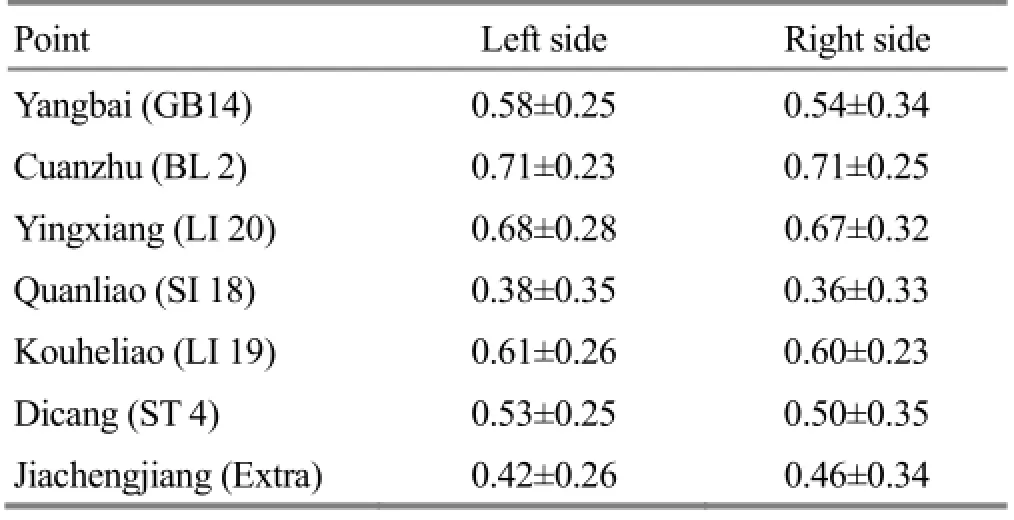
Table 1. Metabolic intensity values of facial points in healthy people
?

Figure 2. Symmetry observation on metabolic intensity values of facial points on both sides in health people
Table 2. Increased metabolic intensity values after needling Hegu (LI 4)
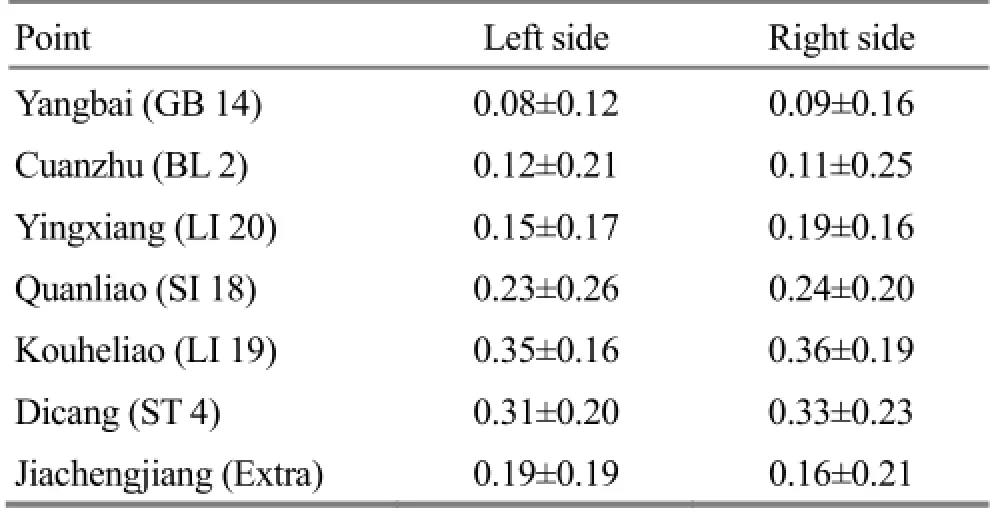
Table 2. Increased metabolic intensity values after needling Hegu (LI 4)
?
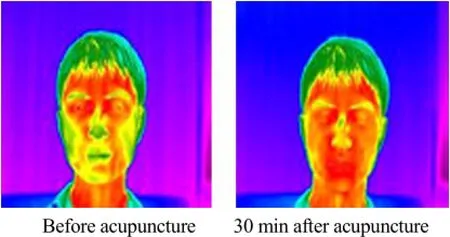
Figure 3. Changes in metabolic intensity values in healthy people before and after acupuncture
3.2.2 Pcolor image analysis on changes in metabolic intensity values after needling bilateral Hegu (LI 4) in healthy people
Two-frame and full-frame analyses were performed on 6 images collected within 30 min. The two-frame analysis refers to pcolor image manifesting the absolute value of metabolic intensity value differences by reducing one image from the other one. The full-frame analysis refers to pcolor image manifesting the absolute value of added metabolic intensity value differences of every two-frame ones.
The two-frame analysis was made on two images collected before and 5 min after acupuncture. The purple part in the pcolor image indicates a relatively bigger absolute value of metabolic intensity value differences. Since the two pictures were taken 5 min apart, there wasn’t much difference (Figure 4).
The two-frame analysis was re-performed on two images taken before and 30 min after acupuncture. It can be seen that the purple part (bigger absolute metabolic intensity value differences) was mainly distributed around the mouth (Figure 5).
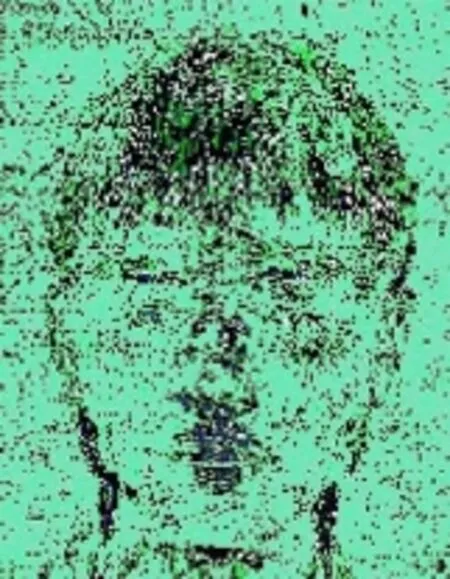
Figure 4. Pcolor image before and 5 min after acupuncture

Figure 5. Pcolor image before and 30 min after acupuncture
3.2.3 Full-frame analysis on thermographic images before and 30 min after acupuncture
The full-frame analysis on facial thermographic images before and after needling Hegu (LI 4) has shown that the metabolic intensity values of most facial points were increased, especially the area around the mouth (Figure 6).
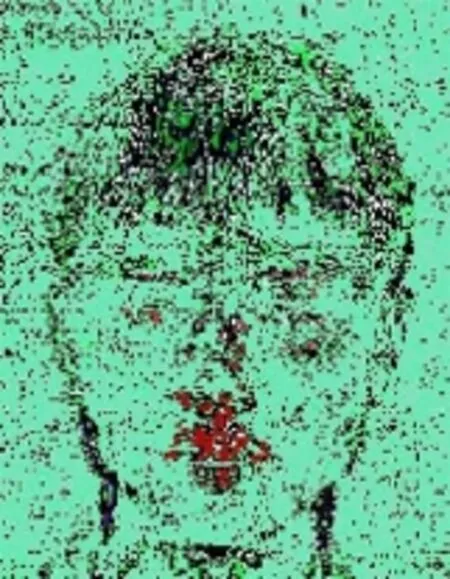
Figure 6. Full-frame pcolor image before and 30 min after acupuncture
4 Discussion
Infrared imaging technology on temperature values and symmetry of points has been discussed in numerous articles. However, the data accuracy has been controversial because the skin temperature can be influenced by self-thermoregulation and environment temperature. The metabolic intensity values of points obtained via thermal chromatography technology can accurately show acupuncture effect on the body as well as changes in metabolism.
As infusion sites of qi and blood on the surface of body, acupuncture points manifest physiological conditions and pathological changes. Normally, yin and yang are in a balanced state. Pathologically, disharmonies of qi, blood, yin and yang may cause asymmetrical metabolic intensity values of points on both sides. This study has proven that facial points on the both sides in healthy people have symmetric metabolic intensity values; needling Hegu (LI 4) can change metabolism along the facial pathway of the Large Intestine Meridian. This can offer objective basis for Hegu (LI 4) in the treatment of face/mouth problems.
This study has some limitations. For example, some points in the image needed to be located by hand, which may cause some errors; and metabolic intensity values still need more experimental observations. In the future, we need a more comprehensive observation on healthy people using thermal chromatography technology and obtain distribution characteristics of metabolic intensity values. In the meantime, we also need to conduct further studies on Bell’s palsy, neck pain, low back pain, frozen shoulder and stroke using the same technology.
Conflict of Interest
The authors declared that there was no conflict of interest in this article.
Acknowledgments
This work was supported by the National Key Scientific Instrument and Equipment Development Projects (国家科技计划基金项目, No. 2012YQ160203).
Statement of Informed Consent
Informed consent was obtained from all individual participants included in this study.
Received: 23 March 2015/Accepted: 28 April 2015
[1] Wang H, Du YH. Science of Acupuncture and Moxibustion. 3rd Edition. Beijing: China Press of Traditional Chinese Medicine, 2013: 35.
[2] Chen SL, Jin ZG, Jing XH, Zhang JL, Cai H, Lu B, Jiang J, Zhang L, Liu AH. Morphological study on the afferent pathways of ‘Hegu’ point and mouth-face region. Zhen Ci Yan Jiu, 2004, 29(3): 217-221.
[3] Jing XH, Cai H, Lu B, Chen SL, Zhang L, Jiang J, Jin ZG. Study on morphological foundation of point LI 4 treating diseases in the face and mouth. Zhongguo Zhen Jiu, 2003, 23(2): 109-110.
[4] Li LY, Zhao B, Yang J, Li CF. Research advance on ‘Hegu (LI 4) for problems involving the face and mouth’. Anhui Zhongyi Xueyuan Xuebao, 2011, 30(5): 76-78.
[5] Lü SW, Li H, He WT, Pang YH, Jin X, Jiang T, Wang YH, Zhao LJ. The localization and quantification study of the infrared radiation in region of forehead, face and neck of the adult male. Zhongguo Tishixue Yu Tuxiang Fenxi, 2003, 8(3): 170-172.
[6] Wang YH, Lü SW, He WT, Jiang T, Jin X, Li H. The localization and quantification study of the infrared radiation in region of forehead, face and neck of the adult female. Acta Academiac Medicine CPAPF, 2004, 13(2): 98-100.
[7] Qu XX, Zhang D, Li SY, Wang SY, Ma HM. Temperature and blood perfusion on facial points in health people. Shaanxi Zhongyi, 2009, 30(8): 1076-1079.
[8] Zhang D, Gao HH, Wen BZ, Wei ZX. The thermography study on the relationship between the facial paralysis and the symmetry of facial temperature. Chinese J Med Imaging, 1996, 4(3): 171-173.
[9] Gao YH, Xue YL, Luo Y, Zhou ZL, Cui X, Tian L, Pan JK. Change of cephabfacial far infrared thermogram as an evaluating index for treatment of acute peripheral facial paralysis. Zhongguo Zuzhi Gongcheng Yanjiu Yu Linchuang Kangfu, 2010, 14(13): 2373-2376.
[10] Gao YH, Xue YL, Luo Y, Zhou ZL, Cui X, Pan JK, Yao WF. Changes in cephabfacial far infrared themogram among acute and chronic peripheral facial paralysis patients. Chin J Laser Med Surg, 2008, 17(1): 50-54.
[11] Wu ZY, Liu XL, Hong WX, Zhang D. Research on the correlation between the temperature asymmetry at acupoints of healthy and affected side and the severity index of facial paralysis. Zhongguo Zhen Jiu, 2010, 30(11): 953-956.
[12] Liu XL, Hong WX, Song JL, Wu ZY. Objective evaluation on the role of asymmetric infrared heat analysis in facial nerve injury. Guangpuxue Yu Guangpu Fenxi, 2012, 32(3): 647-650.
[13] Liu XL, Hong WX, Zhang T, Wu ZY. Objective assessment of facial paralysis using local binary pattern in infrared thermography. Shengwu Yixue Gongchengxue Zazhi, 2013, 30(1): 34-38.
[14] General Administration of Quality Supervision, Inspection and Quarantine of the People’s Republic of China, Standardization Administration of the People’s Republic of China. Nomenclature and Location of Acupuncture Points (GB/T 12346-2006). Beijing: Standards Press of China, 2006.
Translator: Han Chou-ping (韩丑萍)
应用热层析技术研究面部腧穴代谢强度值的变化情况
目的:通过观察针刺健康人双侧合谷穴前后面部腧穴代谢强度值的变化情况, 为研究合谷穴与面口部之间的联系提供一定的科学依据。方法:通过医学热层析成像技术, 应用Pennes生物传热理论与模型, 从在校大学生中召集45名健康受试者, 分别采集针刺双侧合谷穴前后面部红外热层析的图像, 观察针刺前健康人面部腧穴代谢强度值的分布特征, 以及针刺双侧合谷穴后健康人面部腧穴代谢强度值的变化情况。结果:针刺前, 健康人面部腧穴代谢强度值最高的是攒竹, 平均值为(0.71±0.23) W, 代谢强度值最低的是颧髎; 左右同名腧穴代谢强度差值无统计学意义。针刺双侧合谷穴后, 健康人面部腧穴代谢强度值以增加为主, 其中口禾髎增加最大, 平均增加0.35 W; 阳白穴增加最小, 平均增加0.08 W。结论:健康人面部左右同名腧穴代谢强度值对称性良好; 针刺双侧合谷穴后, 健康人面部腧穴的代谢强度值较针刺前有所增加, 其中以口唇周围增加明显, 这与手阳明大肠经在头面部的走形相吻合, 为合谷穴与面口部之间的联系提供了一定的科学依据。
穴, 合谷; 针刺疗法; 穴位特异性; 穴位研究
R245.2 【
】A
Author: Yu Le, master of medicine, resident.
E-mail: 437056306@qq.com
Methods:A total of 45 healthy college students were selected in this study. Using medical thermography and Pennes bio-heat transfer model, the infrared thermograph images on the face before and after needling bilateral Hegu (LI 4) were collected to observe the distribution of metabolic intensity value on the face before acupuncture and changes in these values after needling bilateral Hegu (LI 4).
Results:Before acupuncture, Cuanzhu (BL 2) had the maximal metabolic intensity value. Its mean value was (0.71±0.23) W. Quanliao (SI 18) had the minimal metabolic intensity value. There were no left-right statistical significances in metabolic intensity values. After needling bilateral Hegu (LI 4), the metabolic intensity values of most points on the face were increased. Kouheliao (LI 19) obtained the maximal increase: 0.35 W on average; and Yangbai (GB 14) obtained the minimal increase: 0.08 W on average.
Conclusion:Points on both sides in healthy people have good symmetry in metabolic intensity value. After needling bilateral Hegu (LI 4), the metabolic intensity values of points on the face were increased, especially points around the lips, which accords with the pathway of the Large Intestine Meridian on the head and face. This provided some scientific foundation for the association between Hegu (LI 4) and face/mouth.
猜你喜欢
杂志排行
Journal of Acupuncture and Tuina Science的其它文章
- Electroacupuncture at Houxi (SI 3) for acute lumbar sprain: a meta-analysis of randomized controlled trials
- Clinical observation on warm needling therapy for scapulohumeral periarthritis: a randomized controlled trial
- Clinical observation on acupuncture plus chiropractic treatment for cervical spondylosis
- Observation on clinical effect of acupuncture for cervical spondylosis of vertebral artery type
- Scalp acupuncture combined with body acupuncture for 32 cancer cases with intractable hiccups after radiochemotherapy
- Clinical effect observation on acupuncture for chronic obstructive pulmonary disease
